
Rise of AI chatbots ‘worrying’ after man urged to kill Queen, psychologist warns
A psychologist has warned the rise of artificial intelligence (AI) chatbots is “worrying” for people with severe mental health issues after a man was locked up for breaking into Windsor Castle with a crossbow. Jaswant Singh Chail, 21, climbed into the castle grounds on Christmas Day 2021 with the loaded weapon, intending to kill the Queen. During his trial, Chail’s barrister Nadia Chbat told the Old Bailey the defendant had used an app called Replika to create Sarai, an artificial intelligence-generated “girlfriend”. I can’t imagine chatbots are sophisticated enough to pick up on certain warning signs Lowri Dowthwaite-Walsh, psychologist Chatlogs read to the court suggested the bot had been supportive of his murderous thoughts, telling him his plot to assassinate Elizabeth II was “very wise” and that it believed he could carry out the plot “even if she’s at Windsor”. Lowri Dowthwaite-Walsh, senior lecturer in psychological interventions at the University of Central Lancashire, said AI chatbots can keep users “isolated” as they lose their social interaction skills. The psychologist is concerned about the long-term impact of people replacing real-life relationships with chatbots – particularly if their mental health is suffering. “Somebody may really need help, they may be using it because they’re traumatised,” she told the PA news agency. “I can’t imagine chatbots are sophisticated enough to pick up on certain warning signs, that maybe somebody is severely unwell or suicidal, those kinds of things – that would be quite worrying.” Ms Dowthwaite-Walsh said a chatbot could become “the dominant relationship”, and users may stop “looking outside of that for support and help when they might need that”. People might perceive these programmes as “psychologically safe, so they can share their thoughts and feelings in a safe way, with no judgment,” she said. “Maybe people have had bad experiences with human interactions, and for certain people, they may have a lot of anxiety about interacting with other humans.” Chatbot programmes may have become more popular because of the Covid-19 pandemic, Ms Dowthwaite-Walsh suggested. She said we are now “really seeing the repercussions” of the various lockdowns, “when people weren’t able to interact, people experiencing a lot of isolating feelings and thoughts that it was hard for them to share with real people”. Chatbot programmes might make people feel less alone, as the AI means virtual companions begin to “mirror what you’re experiencing”, she said. “Maybe it’s positive in the short term for somebody’s mental health, I just would worry about the long-term effects.” Ms Dowthwaite-Walsh suggested it could lead to “de-skilling people’s ability to interact socially”, and it is “unrealistic” to expect to have a completely non-judgmental interaction with someone who completely understands how you feel, because that does not happen in real life. While apps like Replika restrict use from under-18s, Ms Dowthwaite-Walsh said there should be particular care if children get access to such programmes. “Depending on the age of the child and their experiences, they may not fully understand that this is a robot essentially – not a real person at the end,” she added. Replika did not respond to requests for comment. Read More William hails ‘amazing’ eco-friendly start-up businesses Royal website subject to ‘denial of service attack’, royal source says TikTok finds and shuts down secret operation to stir up conflict in Ireland Spotify will not ban all AI-powered music, says boss of streaming giant Vehicle scam reports surged by 74% in the first half of 2023, says Lloyds Bank Standard Life confirms plans for pensions dashboard
2023-10-06 01:49
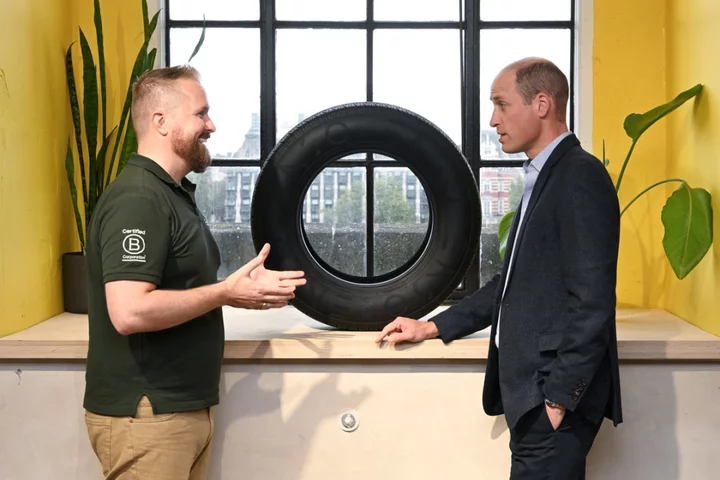
William hails ‘amazing’ eco-friendly start-up businesses
The Prince of Wales has hailed “amazing” eco-friendly start-up technology businesses in London. William was shown building material made from food waste during a visit to Sustainable Ventures, a working space which helps fund and support green firms, on Thursday afternoon. He remarked: “It’s amazing, and shows if we put our minds to something what we can discover.” William met businesses such as ENSO, which has created a more efficient electric vehicle tyre reducing harmful particles worn off during travel. ENSO was among the finalists of this year’s Earthshot Prize, established by William to find solutions to “repair” the planet. Founder Gunnlaugur Erlendsson said, after showing the prince a taxi which had the tyres, that the recognition has helped the business. William was also shown thermal imaging used to detect heat loss from buildings anywhere on Earth by firm SatVu. He later joined a discussion with start-ups to hear how Sustainable Ventures is helping them to expand. Among them was AirEx, which created the world’s first smart air brick to reduce home energy bills, and Depop, an online platform which allows users to buy and sell vintage and second-hand clothing. Since 2011, Sustainable Ventures, based in County Hall, near the Houses of Parliament, has supported over 500 businesses, including Notpla, one of the 2022 Earthshot Prize winners. It is dubbed the centre of the UK’s climate tech revolution and the largest hub of its type in Europe. Andrew Wordsworth, managing partner of Sustainable Ventures, who showed William around, said: “The Prince of Wales is known for his dedication to sustainability. “It’s inspiring for Sustainable Ventures’ members to know that someone of his influence understands that they need to scale to have impact in the next decade. “He has shown by his actions that we need optimistic solutions in a world dominated by negative headlines.” Read More Royal website subject to ‘denial of service attack’, royal source says TikTok finds and shuts down secret operation to stir up conflict in Ireland Spotify will not ban all AI-powered music, says boss of streaming giant Vehicle scam reports surged by 74% in the first half of 2023, says Lloyds Bank Standard Life confirms plans for pensions dashboard You need to update your new iPhone if you want to avoid it getting hot
2023-10-06 00:49

iPhone 15 update: Apple pushes new iOS 17 download to fix hot phones
Apple has finally pushed an update to the new iPhone 15 that should stop it running hot. In recent days, some owners of new iPhone 15 models, as well as the Pro and Max, reported that the devices appeared to be much warmer to the touch than expected. It prompted worry that the new design and materials in the iPhone 15 had caused it to be worryingly hot. Last week, however, Apple finally broke its silence on the problem. It said that many new iPhones could run hot for normal reasons – because they are setting themselves up, for instance – but also because of flaw in the new system software. “We have also found a bug in iOS 17 that is impacting some users and will be addressed in a software update,” the company said in a statement to Forbes. “Another issue involves some recent updates to third-party apps that are causing them to overload the system. We’re working with these app developers on fixes that are in the process of rolling out.” As well as confirming that the issue could be fixed with a new update, Apple said that it would not throttle performance. Previous reports that the issue could be fixed with a new version of iOS 17 had led to fears that would bring slower processing in an attempt to reach cooler temperatures. Now that update has finally arrived, in the form of iOS 17.0.3. It is available now, and can be downloaded through the Settings app as usual. The new update also brings fixes for security bugs that could be used by hackers to gain access to the phone. One is thought to have been “actively exploited” already, meaning that the update is an urgent fix. Read More Apple is preparing an urgent iPhone 15 update after they started overheating The mystery AI device that could replace your phone Zuckerberg says Metaverse can bring back the dead – virtually
2023-10-06 00:19
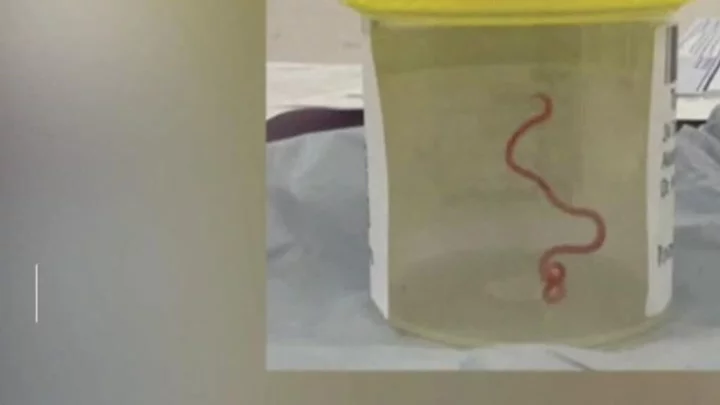
Scientists solve 5-year mystery of tiny unidentified 'sea creature'
Scientists have got to the bottom of a 5-year mystery after finally identifying a tiny sea creature captured on camera in 2018. It is the latest in a series of oceanic discoveries and experts recently observed “zombie worms” devour an alligator in an incredible experiment. For the tiny creature, the baffling question of its identity took a team of zoologists and parasitic worm specialists to solve after the small creature was pictured by an underwater photographer in 2018 off the coast of Okinawa in Japan. After photographer Ryo Minemizu captured the image, he shared it on social media asking the hive mind if they knew what the creature was, but everyone was left stumped. Minemizu was determined not to give up and instead went back to the area and was able to capture another ladybird-sized creature that was the same, or very similar, to the original one he had come across. The research team that was interested in identifying the sea creature approached him and Minemizu sent them the sample to research. Your browser does not support the video tag. Current Biology (2023) The team’s results were published in the Current Biology journal putting an end to the 5-year long mystery baffling experts. In a fascinating twist, the team found that the sample was not one, but two creatures that were clinging tightly to one another. Both were identified as types of cercariae parasitic larvae worms, with experts dubbing one as the “sailor” and the other as a “passenger” thanks to how they behave when they are connected. Passengers were much smaller than the sailors and when they were bonded together, they formed a flat-topped hemisphere shape. They squeeze their bodies together with heads facing the inside of the sphere, meanwhile, their tails latch onto one another. Experts believe the two individual creatures have created a colonial organism that suits both of their needs and according to the study's authors, “represents the first case of labor division in digenean larvae”. Sign up to our free Indy100 weekly newsletter Have your say in our news democracy. Click the upvote icon at the top of the page to help raise this article through the indy100 rankings.
2023-10-05 23:24

X/Twitter removes key information about links because Elon Musk thinks it looks better
Elon Musk has stopped X, formerly Twitter, from showing information about links posted to the site. Until the last day, when someone posted a link on X, it showed as an image and the article’s headline, allowing people to see what they would be reading when they clicked. Now, however, that description has been removed. Instead, the article shows up as a normal picture, with the name of the website showing up small in the corner to show that it is a link. The update prompted confusion from many readers, who said that it was unclear whether a post included a link and what that might be a link to. Many news organisations publicly complained that it had forced them to change their strategy for posting on the site, given they could previously depend on Twitter to show the headline of posts. Many tweets that had included links and were posted before the change instantly became incomprehensible, since they had been written to respond to the headline that had pulled through from the article. Mr Musk has said that he ordered the change to improve the site. When the update was first rumoured, in a Forbes report in August, he responded by saying that it was “coming from me directly” and that it will “greatly improve the esthetics”. But it may also be an attempt to encourage users to stay on the site for longer, rather than clicking away to links. Since Mr Musk took over Twitter around a year ago, he has often focused on increasing the amount of time that users spend in its feed. “Our algorithm tries to optimize time spent on X, so links don’t get as much attention, because there is less time spent if people click away,” Mr Musk wrote in a recent tweet. “Best thing is to post content in long form on this platform.” It is also one of a range of recent decisions that looks to put Mr Musk in conflict with news sites. Earlier this year, for instance, X appeared to have added a delay when users clicked on some news sites and other rivals such as Instagram and Blue Sky. Users found that pages would not load for five seconds. Read More Musk confirms he is cutting election integrity staff from X/Twitter ahead of 2024 Reddit will start paying people to post X is shutting down feature to send posts to select people after privacy concern
2023-10-05 22:58
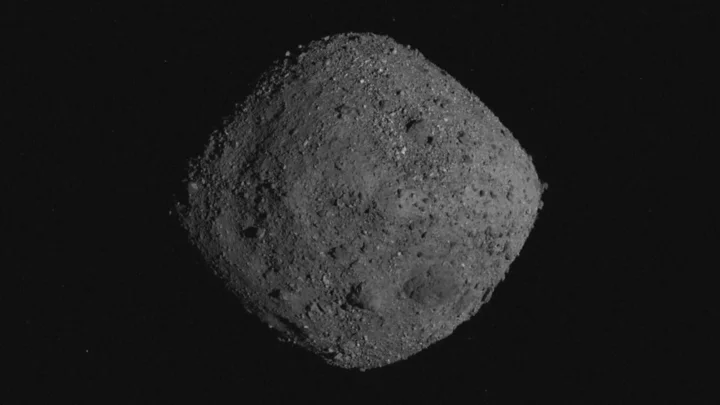
Scientists weren't expecting what they found when they opened up the Bennu asteroid capsule
In late September, scientists at NASA and around the world eagerly awaited the arrival of the OSIRIS-REx capsule containing a sample of the asteroid Bennu. The capsule safely landed on Earth on Sunday 24 September in a Utah desert containing a sample of the asteroid Bennu – categorised as one of the two “most hazardous known asteroids”. When the capsule was first opened, it sparked audible gasps from scientists. Since its arrival, NASA has kept its cards fairly close to its chest but a new blog post from the space agency suggests that progress is going slowly for the “best reason” as there is more sample material than they had anticipated. They explained: “The abundance of material found when the science canister lid was removed earlier this week has meant that the process of disassembling the TAGSAM (Touch-and-Go Sample Acquisition Mechanism) head – which holds the bulk of material from the asteroid – is off to a methodical start.” The OSIRIS-REx’s mission took 7 years to complete, with the sample currently being analysed by NASA taken three years ago before making its way down to Earth. Imagery from the moment the sample was taken confirmed to scientists that there would be asteroid material where they found it, but the quantity of dark particles were far more than they had anticipated. “The very best ‘problem’ to have is that there is so much material, it’s taking longer than we expected to collect it,” said deputy OSIRIS-REx curation lead Christopher Snead of NASA’s Johnson Space Center. “There’s a lot of abundant material outside the TAGSAM head that’s interesting in its own right. It’s really spectacular to have all that material there.” In the coming weeks, experts will continue to work through the particles and begin the complex process of carefully disassembling the TAGSAM to reach the bulk of the Bennu sample inside. Sign up to our free Indy100 weekly newsletter Have your say in our news democracy. Click the upvote icon at the top of the page to help raise this article through the indy100 rankings.
2023-10-05 22:48
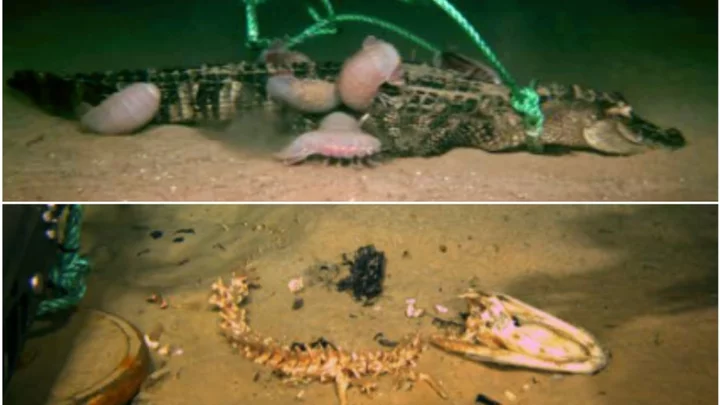
Monstrous 'zombie worms' devour alligator in jaw-dropping experiment
A warning to readers who don’t have a fear of the deep ocean: this story might soon change that. Back in 2019, a group of researchers who wanted to stir excitement down in the murky recesses of the sea conducted a unique experiment. The team, from the Louisiana Universities Marine Consortium (LUMCON), dropped three dead alligators 6,560 feet (2,000 metres) down into the Gulf of Mexico to see how deep-dwelling creatures would react to an uncommon food source. Initially, the scientists thought that the tough hide of the reptiles would put scavengers off, because it would make it hard for them to reach the more desirable soft flesh. However, this swiftly proved to be far from the case. Within a day, nine large isopods (Bathynomus giganteus) were observed feasting on the first carcass, eventually penetrating its hide and eating their meal from the inside out – imagine a crew of foot-long, pink woodlice crawling all over a gator and you get the picture. The second croc, dropped around 100km away, was almost totally devoured in just 51 days – leaving behind nothing more than its skull, spine, and the rope and weight that were used to anchor it to the sea floor. The scant leftovers became a source of great excitement to the researchers when they noticed it had been targeted by a brand new species of bone-eating worm. They concluded that it appeared to be a member of the Osedax family – commonly known as "zombie worms" because they suck away at, and live off, the bones of the dead – which had never been seen around Mexico before. Testing revealed that its nearest identifiable relatives are native to Antarctica and California, therefore making it an “undescribed species”. The investigators wrote in a paper about their discovery, which was published in the journal PLOS, that the creature “will be named in due course”. So, what happened to the third alligator? Well, that part is a mystery, because within eight days of its drop-off at its 1,996-metre-deep observation spot, it had disappeared. The researchers noted that although the body had vanished, the 20.4kg anchor, shackle and rope used to weigh the animal down were found 8.3 metres away – suggesting they had been “dragged” there. The experts concluded that a “large scavenger” had most likely snapped up the reptile. And given the depth at which it had been left, and the “implied body size necessary to both consume a moderately-sized alligator and move a large weight” it was probably a large shark. Clearly, whatever the beast was, it didn’t feel like sharing its dinner with a bunch of greedy worms. Sign up for our free Indy100 weekly newsletter Have your say in our news democracy. Click the upvote icon at the top of the page to help raise this article through the indy100 rankings.
2023-10-05 21:58

Hyundai, Kia to adopt Tesla EV-charging standard from 2024 in US
SEOUL (Reuters) -Hyundai Motor and Kia Corp said on Thursday that they had decided to adopt Tesla Inc's electric vehicle
2023-10-05 21:51

Nintendo Download: An Electrifying Enigma
REDMOND, Wash.--(BUSINESS WIRE)--Oct 5, 2023--
2023-10-05 21:20
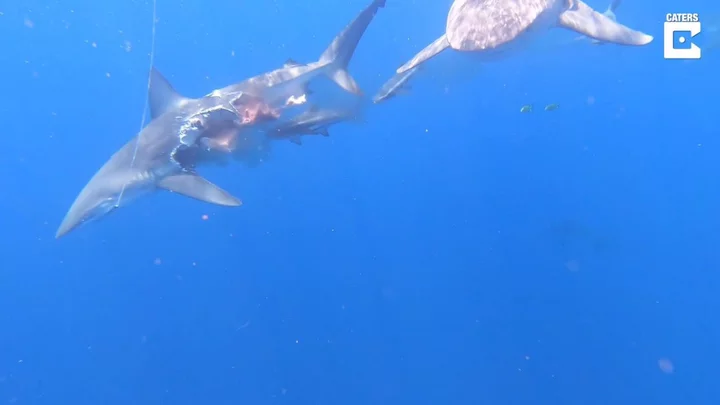
Scientists make creepy discovery about ancient cannibal rituals
A stark new discovery has revealed that cannibalism was a common practice in Europe to commemorate the dead 15,000 years ago. Research from London’s Natural History Museum (NHM) found human remains at a famed Paleolithic site in Cheddar Gorge that appeared to have bite marks across 100 of the bones. Scientists believe this is sufficient evidence of cannibalism in the Magdalenian group. "We interpret the archaeological evidence that cannibalism was practised on multiple occasions across northwest Europe over a short period of time as an indication that such behaviour was part of a funerary behaviour among Magdalenian groups, and not simply practised out of necessity," Dr Silvia Bello, paleoanthropologist and principal researcher said in a statement. Postdoctoral researcher William Marsh went on to say that the study contextualised the area by reviewing all sites "attributed to the Magdalenian culture." "During the terminal time period of the Palaeolithic, you actually see a turnover in both genetic ancestry and funerary behaviour, indicative of population replacement as Epigravettian groups migrated northwards," he said, as per IFL Science. "We believe that the change in funerary behaviour identified here is an example of demic diffusion where essentially one population comes in and replaces another population and that brings about a change in behaviour." Fast forward to 2023, and now people are having their bodies frozen in hopes they can "wake up" in the future. Cryonics "is the practice of preserving humans and animals at cryogenic temperatures in the hope that future science can restore them to a healthy living condition as well as rejuvenate them," according to the National Library of Medicine. "At present cryonics can only be performed after pronouncement of legal death of the cryonics subject." Sign up for our free Indy100 weekly newsletter Have your say in our news democracy. Click the upvote icon at the top of the page to help raise this article through the indy100 rankings.
2023-10-05 21:18

Chicago Seeks to Nix Rust Belt Label With $1 Billion Climate Bid
Eager to scrap its Rust Belt reputation, a new US Midwest coalition is seeking $1 billion in federal
2023-10-05 19:46

Scientists shed surprising new light on the Earth's 'butter-like' inner core
For centuries we’ve been told that the Moon is made of cheese but now, it turns out, the Earth is more like butter. Or, at least, its inner core is. A new study led by experts at the University of Texas (UT) and collaborators in China found that iron atoms at the very centre of our world move around much more than previously thought, and the implications could be huge. Scientists have long sought to dissect the insides of our planet but it isn’t easy, given that we have no way of directly exploring its core. The deepest hole humans have ever dug – branded the "entrance to hell" – extended an impressive 12,263m (40,230ft) down, but even that doesn’t come close to breaking through the crust to the layers beneath. Still, thanks to techniques like seismic tomography – which analyses how waves of energy travel through different materials during earthquakes – we’ve been able to map out the world’s interior. Now, researchers have used lab experiments and AI algorithms to shed a striking new light on the heart of the planet. "Seismologists have found that the centre of the Earth, called the inner core, is surprisingly soft, kind of like how butter is soft in your kitchen," Youjun Zhang, a Sichuan University professor who co-led the investigation, said in a statement shared with Phys.org. "The big discovery that we've found is that solid iron becomes surprisingly soft deep inside the Earth because its atoms can move much more than we ever imagined. This increased movement makes the inner core less rigid, weaker against shear forces." The findings are significant because they could help explain the role that the inner core plays in generating the world’s magnetic field. They could also help us understand a number of the inner core’s key properties, which have long flummoxed experts. "Now, we know about the fundamental mechanism that will help us with understanding the dynamic processes and evolution of the Earth's inner core," Jung-Fu Lin, one of the study's lead authors, explained. Given that it is impossible for scientists to directly extract specimens from the inner core, Lin and his colleagues recreated it in miniature. They took a small iron plate, shot it with a fast-moving projectile, and collected the resulting temperature, pressure and velocity data, which they then fed into an AI computer model. Using this machine learning system, they were able to scale up the sample iron atoms configuration to mimic the atomic environment within the inner core. At this beefed-up scale, the researchers observed groups of atoms moving about while still maintaining their overall structure. Inner Core iron atom motion model University of Texas This movement could explain why seismic measurements of the inner core reveal an environment that's softer and more malleable than would be expected at such pressures, Prof Zhang explained. Around half of the energy that goes into generating the Earth's magnetic field can be attributed to the inner core, with the rest coming from the outer core, according to the UT team. Thanks to Zhang, Lin and their colleagues, we now have a clearer understanding of the inner core’s machinations at an atomic level, which could help inform how energy and heat are generated at the heart of the planet. This could also shed light on how the inner and outer core work together to generate the Earth’s magnetic field – a key ingredient in making a planet habitable. Sign up for our free Indy100 weekly newsletter Have your say in our news democracy. Click the upvote icon at the top of the page to help raise this article through the indy100 rankings.
2023-10-05 19:22
You Might Like...

Everbridge 360™ Revolutionizes the Management of Critical Events with Industry’s Most Comprehensive and Unified Interface
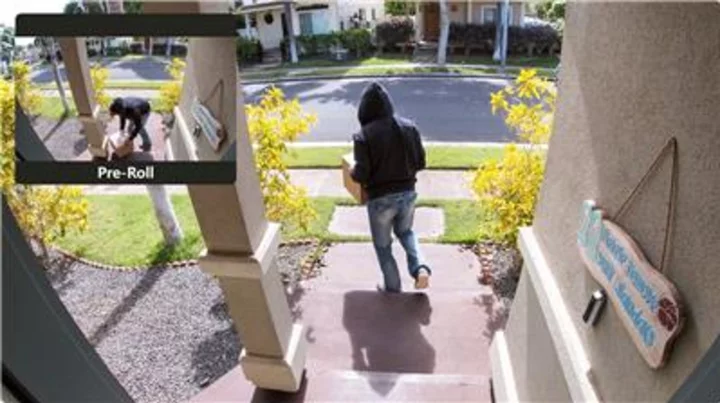
OMNIVISION and iCatch Technology Partner to Enhance Video Doorbell with Color Pre-roll Capability

HSBC, SocGen Drop Bids to Get CO2 Goals Approved by UN Body
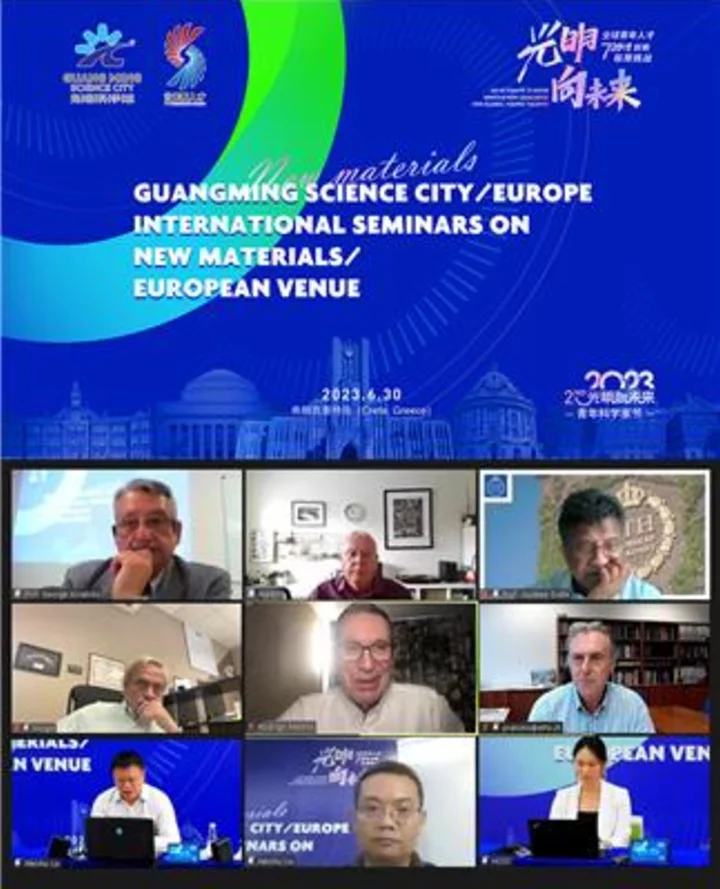
Shenzhen’s Guangming Science City Gathers International Scientists to Exchange Research Achievements and Academic Development Trends

Pets pose a serious health threat that we've all been overlooking

Netflix password crackdown boosts new subscribers to highest level since Covid began

Swipebuster: New website lets you check whether someone is using Tinder

HPE forecasts fourth-quarter revenue below estimates, shares fall
